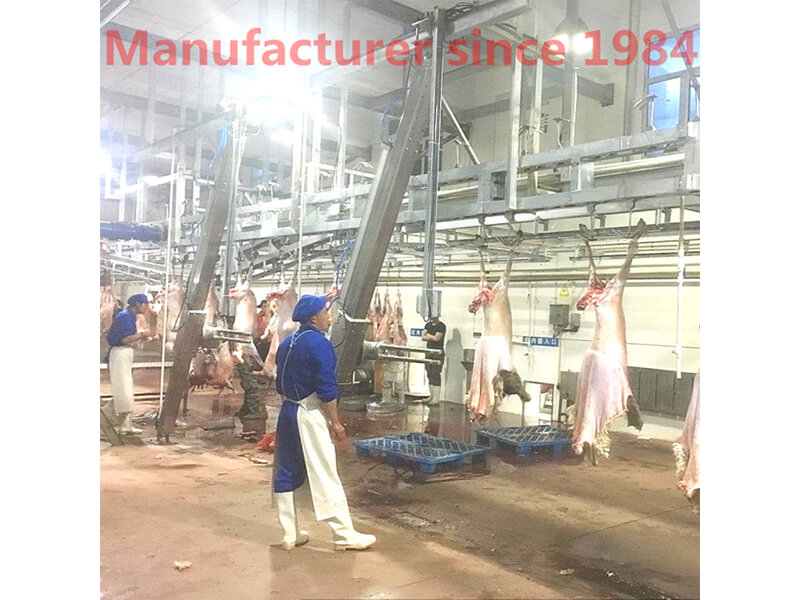
Setting up an efficient and hygienic sheep goat abattoir slaughter procecss line is essential for ensuring the safe and humane processing of livestock. In this article, we will delve into the crucial equipment required for a slaughter line specifically designed to handle 200 sheep and goats. We will also address any inaccuracies and supplement the information with pertinent professional insights.
1. Sheep Automatic Bleeding Conveyor:
The sheep automatic bleeding conveyor plays a pivotal role in the initial stages of the slaughter process. It ensures a humane and efficient bleeding process, which is vital for both product quality and animal welfare. The driving and tension devices work in tandem to ensure a steady and controlled movement of animals along the conveyor, minimizing stress and discomfort.

2. Bleeding Tank:
The bleeding tank is a critical component for proper blood drainage during the initial stages of processing. It is paramount to have an adequately sized and well-designed bleeding tank to facilitate efficient blood collection, preventing contamination and promoting a hygienic slaughter environment.

3. Re-hanging Work Platform:
After bleeding, the re-hanging work platform serves as an essential station for transitioning the animals to subsequent processing stages. Ensuring a sturdy and ergonomically designed work platform helps streamline the process of attaching carcasses to the slaughter line, improving overall efficiency.

4. Pneumatic Sheep Skinning Machine:
The pneumatic sheep skinning machine automates the skinning process, reducing manual labor and enhancing operational speed. Proper maintenance and calibration of this equipment are crucial to ensure consistent and safe skinning operations.
5. Sheep Carcass Processing Overhead Conveyor:
The carcass processing overhead conveyor forms a pivotal part of the slaughter line, facilitating the movement of carcasses through various processing stations. The driving and tension devices ensure a smooth and controlled transition, minimizing the risk of damage to the carcasses.

6. Manual Driving Conveyor Line:
While automation is key to efficiency, manual driving conveyor lines offer flexibility in handling specific processing tasks. These lines are often strategically placed for precision work, ensuring accurate processing and minimizing product waste.

7. Carcass Electric Weighing Scale on Track:
Accurate carcass weighing is essential for quality control and inventory management. Installing an electric weighing scale on the track provides real-time data, allowing for precise weight measurements and tracking of each carcass.

8. Double Track Rail Pulley with Hook:
9. Sheep Feet Shackles Chain:
10. Electric Control Box:
The electric control box serves as the nerve center of the slaughter line, managing the various equipment and ensuring coordinated and synchronized operations. Regular maintenance and monitoring are essential to prevent downtime and maintain a seamless processing flow.

11. Knife Sterilizer:
Maintaining a high level of hygiene is paramount in any abattoir. The knife sterilizer plays a crucial role in preventing cross-contamination by ensuring that knives used in the slaughter process are consistently sanitized.
In conclusion, establishing a well-equipped slaughter line for a 200-head sheep and goat abattoir requires careful consideration of each component’s functionality and maintenance requirements. Proper installation, maintenance, and adherence to industry best practices are imperative to ensure operational efficiency, product quality, and animal welfare. By integrating the aforementioned equipment and insights, abattoir operators can create a streamlined and humane processing environment that aligns with modern standards of meat production.
If you want more information, please contact us by email or WhatsApp. You can add our WhatsApp by scanning the QR code on the right.





Please send me prices
Thanks for your inquiry. My sales team will contact you soon.